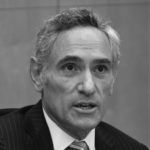
The COVID pandemic has been a tragedy, no doubt. But it has exposed profound issues in America that threaten the principles of freedom and order that we Americans often take for granted.
First, I have been shocked at the unprecedented exertion of power by the government since last March—issuing unilateral decrees, ordering the closure of businesses, churches, and schools, restricting personal movement, mandating behavior, and suspending indefinitely basic freedoms. Second, I was and remain stunned—almost frightened—at the acquiescence of the American people to such destructive, arbitrary, and wholly unscientific rules, restrictions, and mandates.
The pandemic also brought to the forefront things we have known existed and have tolerated for years: media bias, the decline of academic freedom on campuses, the heavy hand of Big Tech, and—now more obviously than ever—the politicization of science. Ultimately, the freedom of Americans to seek and state what they believe to be the truth is at risk.
Let me say at the outset that I, like all of us, acknowledge that the consequences of the COVID pandemic and its management have been enormous. Over 500,000 American deaths have been attributed to the virus; more will follow. Even after almost a year, the pandemic still paralyzes our country. And despite all efforts, there has been an undeniable failure to stop cases from escalating and to prevent hospitalizations and deaths.
But there is also an unacknowledged reality: almost every state and major city in the U.S., with a handful of exceptions, have implemented severe restrictions for many months, including closures of businesses and in-person schools, mobility restrictions and curfews, quarantines, limits on group gatherings, and mask mandates dating back to at least last summer. And despite any myths to the contrary, social mobility tracking of Americans and data from Gallup, YouGov, the COVID-19 Consortium, and the Centers for Disease Control and Prevention (CDC) have all shown significant reductions of movement as well as a consistently high percentage of mask-wearing since the late summer, similar to the extent seen in Western Europe and approaching the extent seen in Asia.
With what results?
All legitimate policy scholars today should be reexamining the policies that have severely harmed America’s children and families, while failing to save the elderly. Numerous studies, including one from Stanford University’s infectious disease scientists and epidemiologists Benavid, Oh, Bhattacharya, and Ioannides have shown that the mitigating impact of the extraordinary measures used in almost every state was small at best—and usually harmful. President Biden himself openly admitted the lack of efficacy of these measures in his January 22 speech to the nation: “There is nothing we can do,” he said, “to change the trajectory of the pandemic in the next several months.”
Bizarrely, though, many want to blame those who opposed lockdowns and mandates for the failure of the very lockdowns and mandates that were widely implemented.
Besides their limited value in containing the virus, lockdown policies have been extraordinarily harmful. The harms to children of suspending in-person schooling are dramatic, including poor learning, school dropouts, social isolation, and suicidal ideation, most of which are far worse for lower income groups. A recent study confirms that up to 78 percent of cancers were never detected due to missed screening over a three-month period. If one extrapolates to the entire country, 750,000 to over a million new cancer cases over a nine-month period will have gone undetected. That health disaster adds to missed critical surgeries, delayed presentations of pediatric illnesses, heart attack and stroke patients too afraid to go to the hospital, and others—all well documented.
Beyond hospital care, the CDC reported four-fold increases in depression, three-fold increases in anxiety symptoms, and a doubling of suicidal ideation, particularly among young adults after the first few months of lockdowns, echoing American Medical Association reports of drug overdoses and suicides. Domestic and child abuse have been skyrocketing due to the isolation and loss of jobs. Given that many schools have been closed, hundreds of thousands of abuse cases have gone unreported, since schools are commonly where abuse is noticed. Finally, the unemployment shock from lockdowns, according to a recent National Bureau of Economic Research study, will generate a three percent increase in the mortality rate and a 0.5 percent drop in life expectancy over the next 15 years, disproportionately affecting African-Americans and women. That translates into what the study refers to as a “staggering” 890,000 additional U.S. deaths.
We know we have not yet seen the full extent of the damage from the lockdowns, because the effects will continue to be felt for decades. Perhaps that is why lockdowns were not recommended in previous pandemic response analyses, even for diseases with far higher death rates.
To determine the best path forward, shouldn’t policymakers objectively consider the impact both of the virus and of anti-virus policies to date? This points to ...

